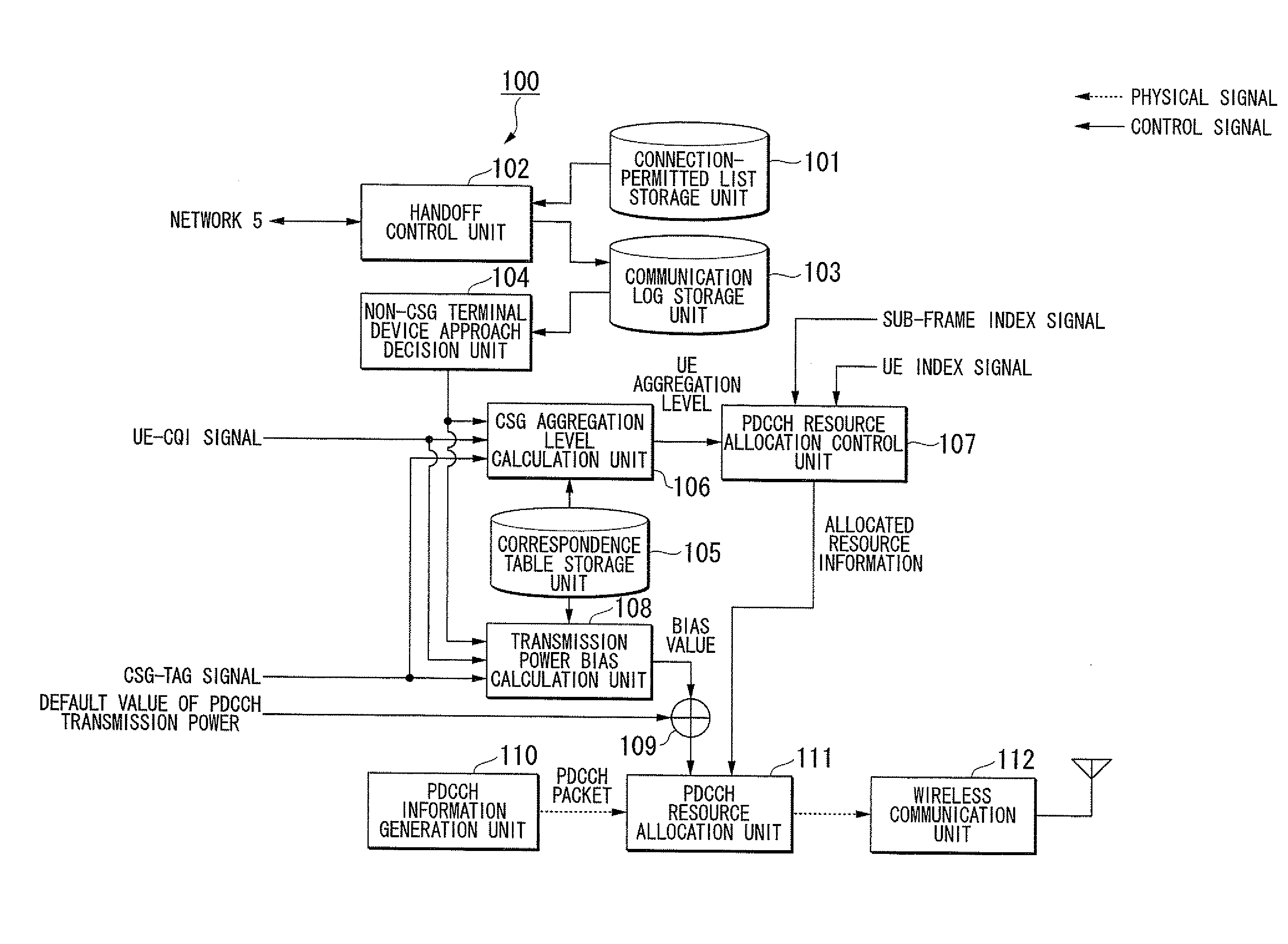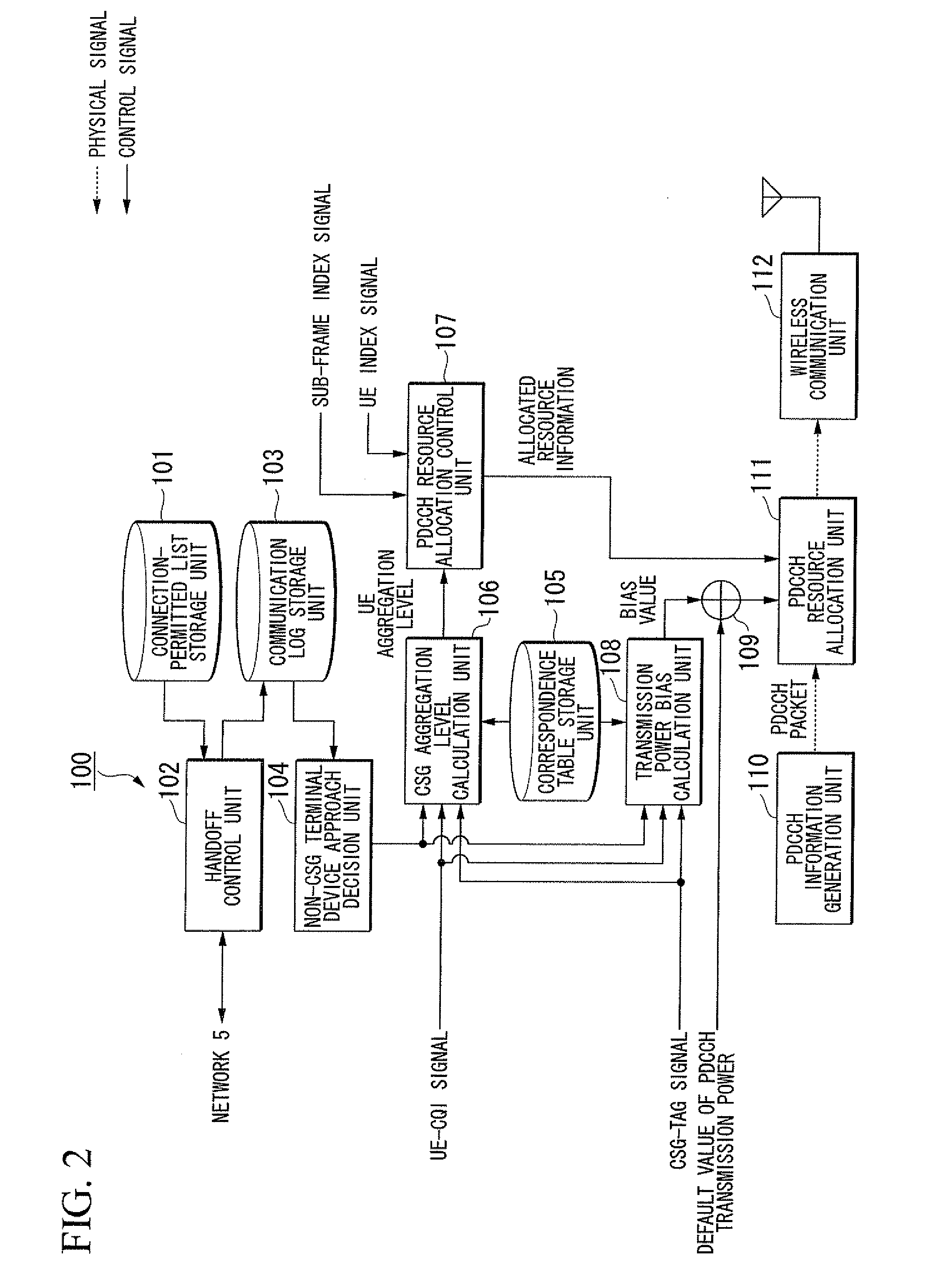Wireless Communication System, Base Station Device, and Program
- Summary
- Abstract
- Description
- Claims
- Application Information
AI Technical Summary
Benefits of technology
Problems solved by technology
Method used
Image
Examples
first embodiment
1. First Embodiment
[0119]FIG. 1 is a schematic diagram of a wireless communication system 1 according to a first embodiment of the present invention. The wireless communication system 1 conducts communication according to a communication system prescribed by the LTE standard. The wireless communication system 1 includes a non-CSG terminal device 300 (where “CSG” stands for “Closed Subscriber Group”), a CSG terminal device 301, a macro-base station device 200 which conducts communication with the non-CSG terminal device 300 and the CSG terminal device 301 via communication links, a CSG base station device 100 which communicates with the CSG terminal device 301, and a network 5 which connects the CSG base station device 100 and the macro-base station device 200 via wires.
[0120]The CSG base station device 100 and the macro-base station device 200 cover communication areas 100A and 200A encompassed using broken lines. The CSG base station device 100 is located inside the communication a...
second embodiment
2. Second Embodiment
[0186]FIG. 10 is a block diagram of a CSG base station device 1010 according to a second embodiment of the present invention. FIG. 11 is a schematic diagram of a wireless communication system including the CSG base station device 1010, a macro-base station device 1020, and a non-CSG terminal device 1030. In this connection, the term “CSG base station device” is equivalent to a CSG base station, and the term “macro-base station device” is equivalent to a macro-base station.
[0187]As shown in FIG. 10, the CSG base station device 1010 includes a non-CSG terminal device detector 1110 (serving as an unregistered terminal device existence decision unit), an antenna transmission mode determination unit 1120, a scheduler mode determination unit 1130, an OFDM symbol determination unit 1140, an RS generation unit 1150, a downlink / uplink data channel allocation unit 1160, a downlink control channel allocation unit 1162, a PDCCH generation unit 1164, a data channel generation...
third embodiment
3. Third Embodiment
[0241]FIG. 15 is a block diagram of an OFDMA system according to a third embodiment of the present invention, wherein a base station device 2001 includes an SRS (Sounding Reference Signal) transmission scheduling unit 2002, an SRS radio resource notification unit 2003, and an SRS band dividing unit 2005.
[0242]The SRS transmission scheduling unit 2002 allocates radio resources, used for uplink SRS transmission, to mobile terminal devices 2004 which visit the coverage area of the base station device 2001. The SRS radio resource notification unit 2003 notifies the mobile terminal devices 2004 of SRS transmission radio resources. The SRS band dividing unit 2005 divides already allocated SRS radio resources so as to secure vacancy of SRS radio resources when no surplus SRS radio resources remain when mobile terminal devices 2004 need SRS radio resources newly allocated thereto.
[0243]FIG. 16 is an illustration of a partial configuration of uplink radio resources in the ...
PUM
 Login to View More
Login to View More Abstract
Description
Claims
Application Information
 Login to View More
Login to View More - Generate Ideas
- Intellectual Property
- Life Sciences
- Materials
- Tech Scout
- Unparalleled Data Quality
- Higher Quality Content
- 60% Fewer Hallucinations
Browse by: Latest US Patents, China's latest patents, Technical Efficacy Thesaurus, Application Domain, Technology Topic, Popular Technical Reports.
© 2025 PatSnap. All rights reserved.Legal|Privacy policy|Modern Slavery Act Transparency Statement|Sitemap|About US| Contact US: help@patsnap.com



